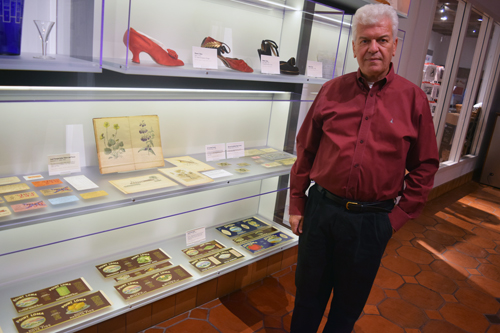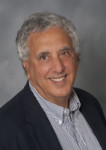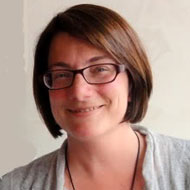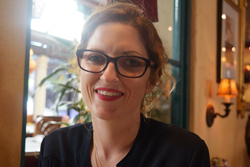
By Donald H. Harrison


SAN DIEGO – A nine-month-long, 10,000 square foot exhibition about the Jews of San Diego, including the community’s history, achievements and troubles since 1850, is now in the design stage with an opening planned in March 2017 at the San Diego History Center in Balboa Park.
Joellyn Zollman, a professor who earned her PhD in history at Brandeis University, is guest curator of the main exhibition while staff curator Tara Centybear currently is compiling examples of Jewish art at a companion exhibit.
Bill Lawrence, executive director of the San Diego History Center (known previously as the San Diego Historical Society), told an interviewer this week that it is possible the exhibition may stretch from nine months to a full year because “the story is one that is critical to the founding of our (general) community, and it deserves to be told in a way that a maximum number of residents of our city and visitors have an opportunity to experience.”
Lawrence, now seven months into his job as executive director after serving the History Center as a chief operating officer and a longtime board member, said the main exhibit will focus on three major time periods, 1850-1900, 1900-1964, and 1964 to the present. Overall, the exhibit will look at the growth of the Jewish community and its institutions, and take note of the contributions by Jews in civic affairs, business, politics, culture, academia, and philanthropy, among other endeavors, Lawrence said.
Additionally, the exhibit will examine Jews as insiders and outsiders in San Diego society. For example, while Jews were elected to public offices as early as the 1850s, they later faced periods of social exclusion and even overt anti-Semitism.
At this point ideas are tentative and can still be influenced by input from the Jewish community, Lawrence said. There will be opportunities for San Diego Jews to tell their own stories, and the museum is always interested in learning what Jewish religious, cultural, historical, and art artifacts may be available in the community for use in the exhibition.
With the caveat that changes may be made, here’s an early look at some of the tentative exhibits.
The 1850-1900 section of the exhibition will deal with the lives of such pioneers as Louis Rose (the first known Jewish settler in San Diego), Lewis Franklin, Victoria Jacobs, Joseph Mannasse, and Marcus Schiller, among others, and will retell the story of the 1859 San Diego incident in which a posse interrupted a Yom Kippur service to physically escort Moses Mannasse, one of ten worshipers, to the nearby courthouse because his testimony was wanted in an altercation he happened to witness. His refusal to testify until after the Holy Day ended was hailed by 19th century Jewish newspapers as a blow for religious freedom.

The 1900-1964 section will look at such Jewish achievers at artist Belle Barancenau, whose large art works in the public areas of the Casa de Balboa will be part of the exhibition; U.S. District Court Judge Jacob Weinberger, who served as a school board member for 21 years and later because San Diego’s first resident federal judge; polio vaccine discoverer Jonas Salk, who built an institute for biological studies in La Jolla; Abraham Ratner and his son-in-law Stanley Foster, founders of Ratner Clothing and owners of the Hang Ten brand name; Sol Price, whose “big box” Price Clubs spawned Costco and helped to revolutionize how people shop; and the Klauber family, wholesale grocers and real estate developers.
This section also will examine the growth of San Diego’s three original synagogues – Beth Israel (Reform), Tifereth Israel (Conservative) and Beth Jacob (Orthodox) – and also look at the neighborhoods where Jews lived (Sherman Heights, North Park, College Area, Del Cerro) and the neighborhoods like La Jolla from which Jews were excluded by covenants and restrictions.
The exhibit also will trace the development of the Jewish community in Tijuana, Mexico, after the United States enforced quotas on immigration; will examine the growth of pro-Nazi, anti-Semitic groups in San Diego County prior to World War II, and will tell of the Holocaust Survivors who made San Diego County their post-war home.
Why does the second period end at 1964, and not, say, 1950? Lawrence responded that this was the year that the restrictive covenants in La Jolla were ended for good with the advent of UCSD and the Salk Institute.
The story will be retold of the realtors being informed that UCSD would locate somewhere else if the discriminatory and illegal practice of refusing to sell homes to Jews and to others was not ended immediately.
The final period stretching from 1964 to the present looks at the continued growth of the Jewish community, with such families with the surnames of Cushman, Epstein, Foster, Jacobs, Price, Rady, Ratner, Speigel and Viterbi not only making business successes but also contributing through philanthropy to the academic, cultural, and scientific growth of San Diego. New synagogues and institutions, including the Lawrence Family JCC and its Center for Jewish Culture, will be noted.
In the realm of politics, numerous Jews were elected or appointed to office, among them Congresswoman Susan Davis, former U.S. Rep. Lynn Schenk, District Attorney Bonnie Dumanis, San Diego Mayor Susan Golding, and San Diego Police Chiefs Bill Kolender and Shelley Zimmerman. What to do about Jewish officeholders whose careers ended shamefully, like former San Diego Mayor Bob Filner, has not been decided.
There are plans also to give attention to Jews in sports such as Ron Mix, Sid Gilman, Hal Saltzman and Bill Starr, and to mention Jewish figures in the news media, among them sportscaster Ted Leitner, political roundtable host Gloria Penner and restaurant reviewer Elanor Widmer.
To best utilize the 10,000 square feet for the main exhibition, the San Diego History Center has engaged the New York –based C&G design firm. “We used C&G on another project that we had at the Serra Museum, and also for our recent military exhibition,” Lawrence said. “We’ve had a good working relationship with them for years.”
C&G Principals Keith Helmeteg and Maya Kopytman have helped design Jewish exhibits in other parts of the country, but “a lot of the work has been making sure that we reflect San Diego because we are not, for example, New York, and the Jewish experience in New York is entirely different,” said Lawrence.
Zollman, the guest curator, meanwhile has been spending a lot of time digging through the History Center’s archives as well as those of the Jewish Historical Society of San Diego, which, following curation by JHSSD, become part of the special collections at San Diego State University. Laurel and Stan Schwartz of the Jewish Historical Society have been rendering assistance.
Centybear likewise has been examining art works suitable for the companion exhibit, which will ask the question “what is Jewish art?” Is it art done by Jewish artists on Jewish subjects? Is it art simply by Jewish artists? Is it art by non-Jewish artists on Jewish subjects? Visitors’ opinions will be welcomed.
These are questions that resonate with organizers of the annual Jewish Film Festival and Jewish Book Fair produced by the San Diego Center for Jewish Culture. How does one decide who is in, who is out? What is the rationale?
Lawrence estimates that the total cost of the exhibition will be $750,000, with Jeff Silberman of the real estate development firm of Carleton Management having provided a seed gift. Lisa Culver, the Center’s Development Officer, is currently engaged in the search for donors. If sufficient money can be raised, Lawrence and Culver told me, admission will be whatever visitors to the exhibition would care to donate.
Ideas for the exhibition are welcome. One may contact Lawrence via blawrence@sandiegohistory.org.
*
Harrison is editor of San Diego Jewish World. He may be contacted via donald.harrison@sdjewishworld.com. Comments intended for publication in the space below MUST be accompanied by the letter writer’s first and last name and by his/ her city and state of residence (city and country for those outside the United States.)
*
A version of this story was republished on Times of San Diego: http://timesofsandiego.com/life/2016/08/25/la-jollas-old-ban-on-jews-as-homebuyers-part-of-coming-exhibit/
Myron Shelley wrote as follows:
It was written that Abe Ratner and Stanley Foster were founders of Ratner Clothing. Abe and his brother, Nate, took over a hat and cap factory started by their father. That business became Ratner Clothing in the 1940s, long before Stanley and Pauline were married. Abe was involved in the styling and sales functions while Nate gave attention to the manufacturing operation. As I recall, Stanley managed his own investments for a while after he was married and eventually came into the business at some time in the 1950s. Eventually, he became the head of the firm and it was he who consummated the Hang Ten purchase.
Myron Shelley
Myron is correct. Thanks for correcting the record.
–Don Harrison, editor, San Diego Jewish World